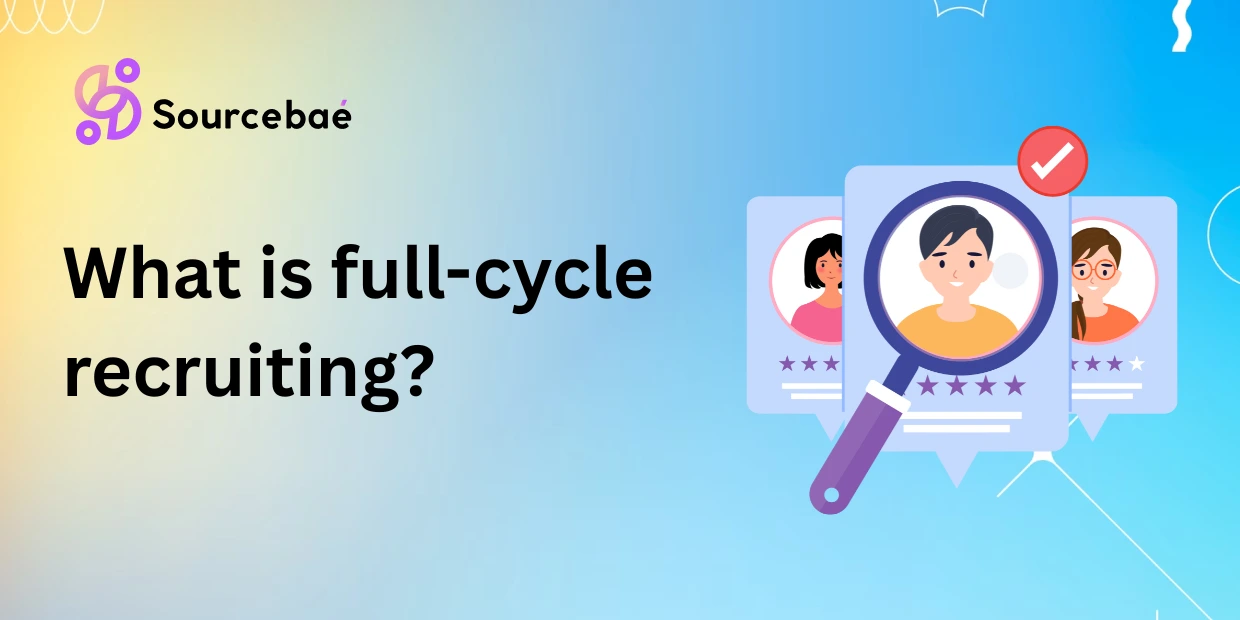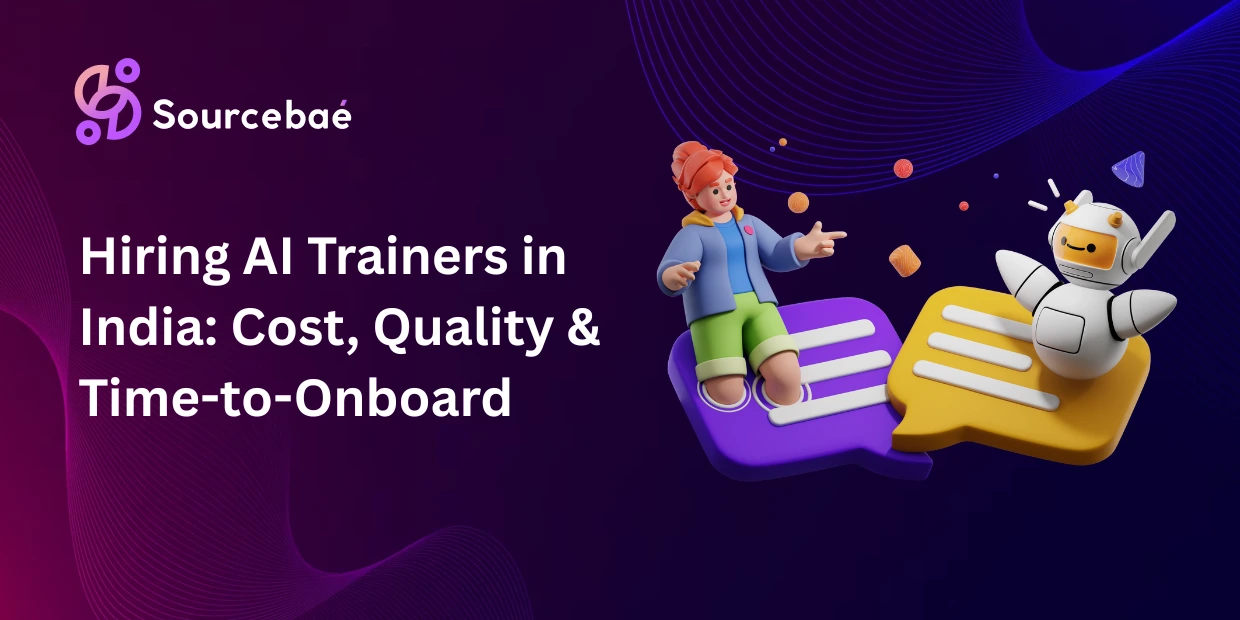In today’s fiercely competitive recruitment landscape, businesses must employ effective, streamlined hiring strategies to attract and retain the best talent. One methodology that many successful companies adopt is full-cycle recruiting. But what exactly does full-cycle recruiting entail, and how can it transform your company’s approach to staffing?
In this comprehensive guide, we’ll explain precisely what full-cycle recruiting is, highlight its numerous benefits, break down each stage of the recruiting cycle, outline the key competencies recruiters need, provide insights into implementation and useful metrics, and answer important FAQs to bolster your understanding.
Whether you’re a hiring manager, HR executive, business owner, or recruiter, you’ll gain valuable insights into mastering the end-to-end hiring process using full-cycle recruiting strategies.
What Exactly is Full-Cycle Recruiting?
Full-cycle recruiting, also referred to as life-cycle recruiting or end-to-end recruiting, involves managing the entire recruitment process from start to finish by a single recruiter or recruiting professional.
Unlike traditional models—where different recruitment specialists handle sourcing, screening, or onboarding in isolation—a full-cycle recruiter proactively manages every phase. This includes everything from identifying hiring needs and sourcing candidates to screening, selection, offers, negotiation, and candidate onboarding.
By maintaining responsibility throughout the recruitment lifecycle, full-cycle recruiting ensures a streamlined candidate experience, fewer communication gaps, increased accountability, and optimized hiring results.
Importance and Benefits of Full-Cycle Recruiting
Adopting full-cycle recruiting strategies yields significant benefits that differentiate your business from competitors:
Streamlined Hiring Process
Full-cycle recruiting eliminates fragmentation, enabling a smoother, more cohesive hiring process. With a clear overview of every recruitment stage, organizations experience fewer redundancies or bottlenecks.
Enhanced Candidate Experience
Candidates work with a single, knowledgeable point of contact who understands their journey, enhancing communication, reducing confusion, and building stronger applicant relationships.
Reduced Hiring Timelines and Costs
Integrated recruitment typically shortens the hiring cycle, allowing businesses to fill roles faster. Reducing time-to-hire inevitably cuts costs related to vacancy periods, external sourcing agencies, and inefficient processes.
Improved Matching Between Skills and Company Requirements
With a complete understanding of the role and the candidate pipeline, recruiters efficiently align candidate capacities with organizational needs to achieve better placements.
Elevated Employer Branding and Recruitment Marketing
Dedicated recruiters become brand ambassadors, directly communicating your company’s vision, culture, and opportunities to prospective applicants—leading to positive, lasting employer impressions.
Stages of Full-Cycle Recruiting
To fully master life-cycle recruitment, it’s essential to understand each clearly defined stage and associated responsibilities:
Preparation
- Identifying organizational staffing needs
- Developing precise job descriptions and candidate profiles
- Engaging stakeholders to gather comprehensive insights about the role
Sourcing
- Candidate research utilizing job portals, social media (LinkedIn), internal referrals, career fairs, etc.
- Executing proactive outreach and strategic recruitment marketing campaigns
- Promoting strong employer branding to attract top talent
Screening & Selection
- Evaluating resumes/CVs against job criteria
- Conducting initial phone or video screenings
- Identifying top candidates meeting organizational skill and culture requirements
Interviewing
- Leveraging structured and behavioral interviews
- Involving relevant stakeholders (hiring managers, team leads) to comprehensively assess candidates
- Carefully focusing on both cultural alignment and soft skills
Candidate Assessment & Evaluation
- Employing test platforms or psychometric assessments to ensure skill validation
- Utilizing objective scoring systems for compliance, fairness, and unbiased hiring practices
Offer & Negotiation
- Developing competitive, attractive compensation packages
- Successfully managing sensitive salary negotiations for mutually beneficial outcomes
Hiring & Onboarding
- Officially formalizing and communicating the job offer
- Creating engaging, structured onboarding processes to aid candidate-to-employee transition
- Ensuring integration, retention, and early productivity
Check out: Video Interviews are Revolutionizing Global Recruiting
Roles & Responsibilities of a Full-Cycle Recruiter
Effective full-cycle recruiters need certain skills and competencies, including:
- Communication Skills: Clear interaction with candidates and hiring teams
- Marketing and Networking Skills: Understanding of recruitment marketing tools and relationship-building
- Interviewing Expertise: Ability to accurately assess candidate’s professional and personal attributes
- Negotiation and Sales Skills: Persuading top candidates through expert negotiations
- Attention to Detail: Organizing, record-keeping, maintaining compliance, and staying responsive
- Tech Proficiency: Familiarity with ATS, CRM platforms, interview scheduling software
Potential challenges, such as workload balance, resource constraints, or resistance to change, can be addressed through training, tools adoption, and strategic team support.
How to Implement Full-Cycle Recruiting in Your Company
Transitioning to full-cycle recruiting requires careful planning:
- Clearly define roles, responsibilities, and communication structures
- Adopt recruitment technology—Applicant Tracking Systems (ATS), candidate relationship management (CRM) platforms, assessment tools—for task automation and data accuracy
- Invest in continuous recruiter training for skill-building and industry insights
- Regularly evaluate workflows and optimize processes based on analytical insights
Metrics & KPIs for Full-Cycle Recruiting
Leverage data and performance metrics to assess and continuously improve your recruitment strategy:
- Time to Fill: Measure duration between job posting and acceptance
- Quality of Hire: Track candidate performance and retention post-hiring
- Candidate Experience Score: Regular candidate feedback
- Offer Acceptance Rate: Percentages representing offer-to-hire effectiveness
- Cost per Hire: Expenses involved per successful placement
- Retention Rates: Employee tenure insights
Monitoring these metrics ensures your recruitment methods remain aligned with organizational needs and goals.
Practical Tips and Best Practices for Successful Full-Cycle Recruiting
To solidify your successful full-cycle recruiting strategy, consider these tips:
- Focus on relationship-building across candidates and departments
- Use automated recruitment technologies to streamline operations
- Prioritize candidate experience and responsiveness throughout the recruitment process
- Ensure data management accuracy and compliance with regulations like GDPR or EEOC
Check out: benefits do video interviews offer
Frequently Asked Questions (FAQs)
What is the difference between full-cycle recruiting and traditional recruiting?
Full-cycle recruiting involves managing every step from intake to onboarding by a single dedicated recruiter. Traditional recruiting is fragmented, limiting efficiency, continuity, and holistic candidate experience.
Who manages full-cycle recruiting—HR departments or dedicated recruiters?
Generally, specialized recruiters with expertise in end-to-end processes manage full-cycle recruiting. While HR oversees policies, dedicated recruiters maintain hands-on recruitment responsibilities.
Are certain industries better suited for full-cycle recruiting?
Industries like technology, healthcare, and finance see substantial improvements transitioning to full-cycle recruiting, though it’s effective universally when implemented correctly.
Can software improve a company’s full-cycle recruiting efficiency?
Absolutely. ATS platforms, integrated CRM systems, video-interview tools, and assessment software significantly optimize full-cycle recruitment processes and enhance efficiency.
What specific skills do full-cycle recruiters require to succeed?
Essential competencies include strong communication, negotiation, marketing knowledge, relationship management, technological agility, and comprehensive industry intelligence.
What common challenges do organizations face when adopting full-cycle recruiting?
Challenges include initial resistance to organizational change, resource allocation constraints, training needs, scaling concerns, and balancing individual recruiter’s workload.
Conclusion: Embrace Full-Cycle Recruiting for Lasting Organizational Impact
In conclusion, properly executed full-cycle recruiting delivers strategic advantages—accelerating hiring processes, enhancing candidate experience, saving resources, aligning hires with company objectives, and strengthening employer branding.
By thoroughly understanding and strategically implementing the full-cycle recruitment method, organizations achieve greater talent acquisition outcomes, talent retention, and overall business growth.
Now is the time to revolutionize your recruitment blueprint by adopting holistic recruitment processes—using powerful technologies and proven best practices. The future of successful hiring is full-cycle recruiting; start mastering it today.





